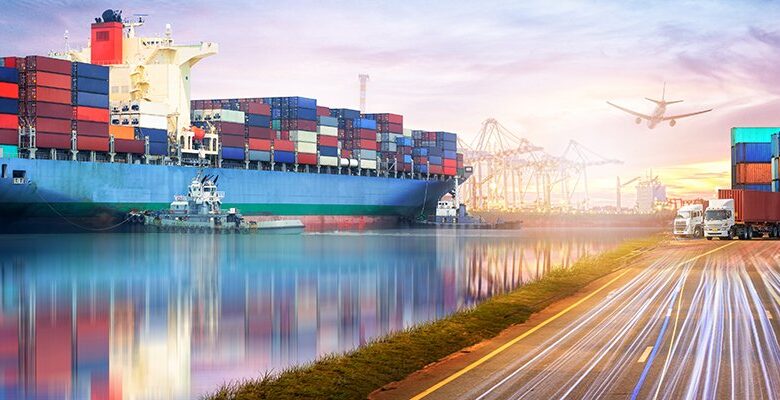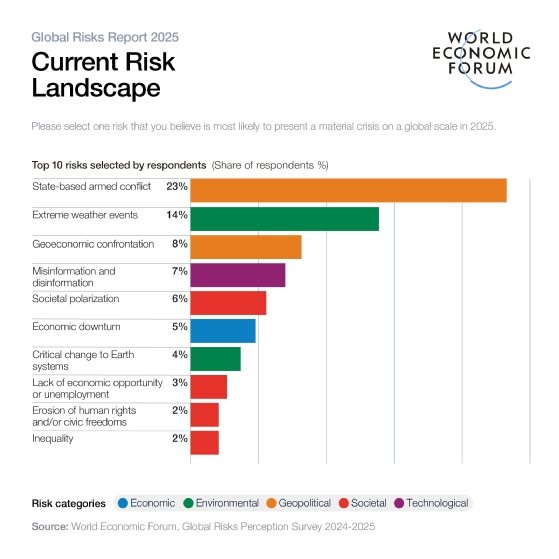Davos 2025: Digital supply chains at risk as world faces two years of turbulence

The risk of conflict, growing protectionism, tariffs and trade wars, and growing regulation threaten to disrupt the supply chains of companies, including access to datacentres and the ability to transfer data across borders.
Ahead of its 2025 annual meeting, the World Economic Forum (WEF) said experts, business leaders and politicians are predicting a stormy, turbulent or unsettled outlook over the next two years.
More than 60 global heads of state and 1,600 global business leaders are due to attend the WEF meeting in the Swiss resort of Davos next week to look for collaborative ways to address world problems.
The annual meeting, which has the theme “a call to collaboration in the intelligent age”, is due to hear from world leaders including US president-elect Donald Trump, Ukraine president Volodymyr Zelenskyy, European Commission president Ursula von der Leyen and China’s vice-premier Ding Xuexiang. The UK’s embattled chancellor, Rachel Reeves, is also expected to attend the event.
The meeting comes as Trump threatens to impose tariffs on two of its closest trading partners, Canada and Mexico, increase tariffs on Chinese goods, and has signalled his intentions to pull out of the Paris climate agreement and the World Health Organisation.
The WEF’s Global risks report 2025 reveals what it describes as an increasingly fractured landscape, where escalating geopolitical, social and technological challenges threaten global stability and progress.
Carolina Klint, chief commercial officer for Europe at Marsh McLennan and a contributor to the report, said increasing protectionism by nation states will pose profound threats to “already fragile and stretched” global supply chains.
“The rise of protectionism and increased trade disputes have led to a significant increase in tariffs and trade barriers worldwide. It is becoming even more evident that many nations push to secure critical natural resources to fuel technology innovations and also the energy transition,” she told a press conference.
Last year saw water shortages impact the Panama Canal alongside severe flooding in multiple countries, regional conflicts in the Middle East and Europe, and strikes at ports that tested global supply chains to breaking point.
This volatility is set to get worse in 2025, with new tariffs and trade restrictions likely to disrupt supply chains further, leading to costs and delays for businesses, and potentially lost contracts.
“Companies relying on a just-in-time inventory system may be challenged by significant delays in receiving critical components from suppliers, or they may have to contend with higher prices that drive up the cost of their products,” said Klint.
The uncertainty surrounding trade policies could also lead to companies taking a “wait and see approach”, which could stall investment and innovation.

Business and governments will likely face disruption not only to physical supply chains, but also digital supply chains. The digital communications systems that form the backbone of the finance system, electricity supplies and telecommunications networks are at increased risk from cyber attacks as protectionism increases, the WEF predicts.
“These risks are clearly top of mind for global leaders, businesses and societal stakeholders, and we see governments now tightening regulations and imposing restrictions on data flows,” said Klint.
One consequence of the rise of digital technology is that people are becoming more concerned about the risks technology poses to privacy, and increased surveillance by governments and private companies that rely on collecting private data as a business model.
“We will likely see regulatory changes as a spillover effect because increased surveillance may prompt governments to implement laws and regulations regarding data protection security. So, we might look at potentially stricter controls on data use,” she said.
As a result, businesses will have to navigate a “labyrinth of compliance requirements” that will make it more difficult to deploy digital technology that could reduce costs and offer innovative services. “We may see sanctions that will impact the ability to access certain cloud providers,” said Klint.
Tariffs and other measures taken by governments to protect their domestic industries could lead to increased cyber espionage and cyber attacks directed at overseas rivals.
Opportunities for tech leaders
Companies may also find themselves on the receiving end of misinformation and disinformation campaigns designed to undermine their reputation.
They will also need contingency plans for unexpected cyber events, such as the CrowdStrike update which led to fatal system errors on Microsoft-powered computers around the world.
“It is critical for businesses to safeguard digital assets, sensitive information and operations in this fragmented economic environment,” said Klint.
Klint says there is now an opportunity for digital leaders and chief information officers “to step up” and to look for opportunities to collaborate with the rest of their organisation.
Business leaders have the opportunity to work with policy makers to lobby for the revival of trade agreements and a more collaborative approach to trade.
“We can, in fact, help to reduce some of the fragmentation that we see and maybe foster a more economic environment. The risks posed by economic fragmentation and protectionism are significant, but they’re not insurmountable,” she said.




